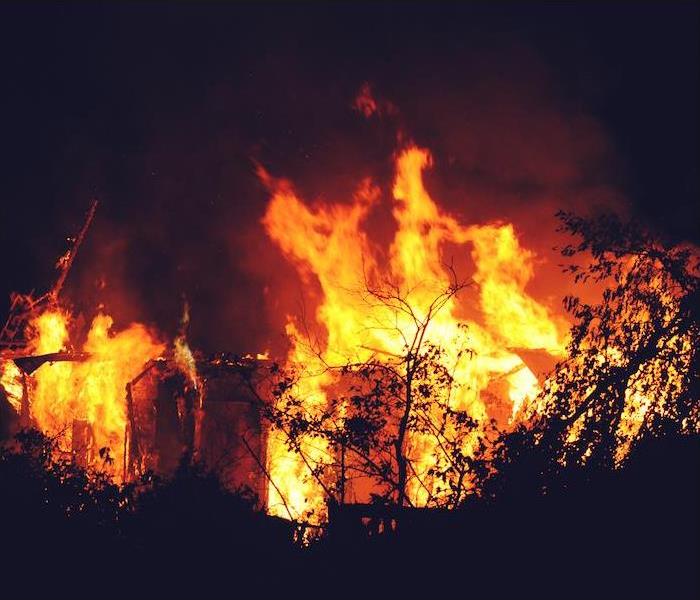Commercial Building Water Damage Causes | SERVPRO® of Spring Valley/Jamul
2/28/2023 (Permalink)
Water can cause a lot of problems, and when a commercial building is damaged, water is frequently the culprit. Even a small leak in a toilet can lead to major destruction.
When you are a building owner or manager, your plate likely stays very full. The idea of having to locate every drip and leak in your building can feel pretty daunting. Familiarize yourself with the places water damage most commonly originates from so you can be proactive about preventing a disaster in your property.
<h3common-sources">3 Common Sources
There will never be a good time for an unplanned interruption in your daily operations. Facing a closure due to water damage can set your income back while your doors are closed and cost you thousands in required repairs.
Make checking several locations prone to water damage in your building a habit so you can catch problems early and prevent extensive losses:
1. The roof. When your roof leaks, it can cause a slow trickle to run throughout the entirety of your building, leaving you with damages on every level. Roof leaks may be from a sudden storm or could occur as your roof ages. Clean your gutters often, and have your roof inspected quarterly to check for weak spots. If a major wind or ice event happens, check your roof afterward to check for any problems right away.
2. Bathrooms. There is a lot of plumbing in bathrooms, and toilets and sinks can leak from a tiny hole. Bathrooms account for 15% of water losses in commercial buildings. Make it a regular task for someone on staff to inspect every bathroom once a month, and stop leaks as soon as they are discovered to mitigate damages.
3. Water heaters/HVAC/boilers. If you have large appliances in your building, you have the potential for leaks that may be hard to discover. Clogged drains and loose pipe connections are common sources of issues in large buildings. Look for standing water near your heating and cooling units, and take note when your water pressure is higher or lower than usual. There are both signs of a bigger problem that will need to be fixed to avoid disaster.
<h3preventive-steps">Take Preventive Steps
While you can’t always stop a natural disaster that causes your building to be overcome with floodwaters, you can control most other forms of water damage when you know what to do. Take the time to prepare yourself, your crew and your building and you can cut total losses drastically.
One of the best steps you can take to prepare for a water disaster is creating a maintenance plan that will have someone laying eyes on your plumbing at least once a month.
SERVPRO can be a great asset to you on this, too. Work with us to build an Emergency Ready Plan that will lay out exactly how to respond when a disaster does strike.
While you prepare, make sure you are checking every fixture in your building and looking at window seals to prevent excess moisture. Locate and map out where water shut-off valves are, and ensure someone who regularly accesses your buildings has the information to be able to turn water off quickly during an emergency.
The best results during a water event come from quick action. Take care of the immediate situation as safely and as fast as possible, and then call SERVPRO. We can respond to your property day or night to get recovery moving. We make it our goal to finish everything quickly so you can keep your doors open.
Experienced water damage in your commercial building? Contact us to get dried out quickly.






 24/7 Emergency Service
24/7 Emergency Service
